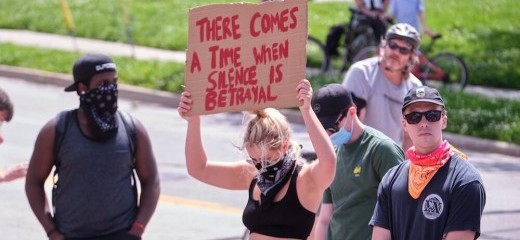
The Deafening Silence of Dance Organizations
by Gregory King
Brenda Dixon Gottschild’s The Black Dancing Body changed my life.
I was introduced to this text in graduate school, and for the first time I understood that my Black feet, my Black butt, and my Black skin were symbols of beauty. I had the great fortune of training at Dance Theatre of Harlem where I had teachers who looked like me. But I’ve also worked in dance companies where members of the creative and executive teams, and the board, were predominantly white. Back then, very few people were having conversations about diversity, equity, and inclusion. In recent years, such discussions have infiltrated the dance world, forcing some companies to hold up a mirror to their organization, and ask, “where is the diversity?”
These conversations around race have become more prominent as they work to answer this question. But recently, the dance world begged, not for answers to that question, but for a stance in support of their Black and brown faculty, staff, and students, after the videos of Ahmaud Arbery, George Floyd, and Amy Cooper were publicized all over the news and social media.
Watching the video of George Floyd, a Black man killed by former police officer Derek Chauvin for allegedly using a counterfeit twenty-dollar bill to buy cigarettes, was traumatizing. Much like watching the video of Amy Cooper, the white woman who performed victimhood in Central Park, when she threatened to call the cops on Christian Cooper, a Black man who simply asked her to follow the rules by putting her dog on a leash. Amy Cooper’s performance revealed a sickness permeating America. This disease of white privilege was on full display when Ms. Cooper could be heard saying, “I’m going to call the cops and tell them there’s an African American man threatening my life.” Not only was this a lie, but one could argue that she knew the implications of such an allegation, as her faux claim and performed hysterics could elicit a specifically racialized response. Both videos exposed the criminality of whiteness, and the false narratives of assumed Black guilt. The videos were painful to watch, but they were revelatory, exposing what some of us already knew: white supremacy is a construct designed to justify the atrocious barbarization of Black and brown people.
Days later, the world galvanized, curating protests and demanding justice for George Floyd, Breonna Taylor, Ahmaud Arbery, and all the innocent, unarmed Black folks who have been killed by the police. All fifty states and approximately fifty-three cities around the world participated in Black Lives Matter protests, making them some of the most intense in U.S history. With all the activists from home and abroad standing in solidarity against police brutality and systemic oppression, I was pleased to see some companies take a stand against injustice. But while these corporate establishments spoke out, several dance organizations in America have remained silent on white supremacy.
You see, the video of Amy Cooper showed a woman weaponizing her whiteness, using it to get what she wants, knowing exactly how her actions could impact a Black life. For me, it was triggering because like so many other Black men, I have been in spaces where I too have been wrongfully accused by white women. I have seen female and male Amy Coopers in action; I know Amy Coopers. Amy Coopers are woven into the quilt of our society. They drive buses; they are doctors, police officers, lawyers, politicians, and movie stars.
They are also dance educators and artistic directors of dance companies.
But here is the gag: Amy Coopers also show themselves when they refuse to denounce racism and racial violence. How does it feel to have the privilege of remaining silent?
Black people are reprimanded for recounting history. Our tones are policed, and our experiences are questioned. We’re expected to be excellent but society challenges that excellence, while at the same time regulating our confidence—all of which makes achieving excellence more challenging. We are scolded for the way we choose to protest police brutality. Our muscles, our bodies, and our skin tones are fetishized, and “innocent until proven guilty” rarely applies to us. We are even criticized for asking our employers to speak up against oppression.
Black dancers (like Pearl Primus, Katherine Dunham, Arthur Mitchell, Alvin Ailey, Josephine Baker, Florence Mills, and Buddy Bradley) have had real influences on dance as an art form. The substantial scope of Black cultural contributions continue to inform and impact major parts of America’s economics, wealth, and culture. In a history article for Encyclopædia Britannica, Hollis Lynch reminds us that enslaved Africans “played a major, though unwilling and generally unrewarded role in laying the economic foundation of the United States...” He hammers home that “Blacks also played a leading role in the development of folklore, music, dancing, and food...” Dance organizations and administrators, your Black staff, Black dancers, and Black students may be in pain. They may be living in fear because people who look like them are under attack. Say something!
What are dance companies really saying when they choose not to say anything in this moment? And what does it say of their board members and their executive and artistic teams? I refuse to call them racist, but if the word wounds or offends, sorry not sorry. Because racist behaviors, policies, and rhetoric have been wounding Black lives for decades. Racial violence kills, and the loudness of your silence is piercing.
Don’t get me wrong. Some organizations have made public statements with good intention. Know that a statement will not be enough. Dismantling racism is about confronting the history of white supremacy while challenging and shifting the power structures within your organization. It is also about addressing white privilege, and how that privilege has been used to maintain that power. And what about the organizations that may not want to make public statements of solidarity at the risk of losing donors? A bit of a quandary I’m sure, but your Black dancers may agree that your desire for funding should be equal to your advocacy for Black lives.
I’m aware of the companies hopping onto the hamster wheel of support as a type of performed allyship. Eventually the protests will end, and the statements you’ve put forward will be relics in the archive section on your websites. We would have seen you parade the Black Lives Matter graphic on your websites and on social media as a gesture of simulated solidarity. But what actions have you taken to dismantle the oppressive matrixes within your organization and institutions?
To start, I would encourage you to examine the makeup of your creative teams, faculty, and board of directors. This may reveal where the crux of the problems lie. It’s hypocritical to tout a mission of diversity, equity, and inclusion while the racial and ethnic composition of your organization’s leadership and policymaking team is all or mostly white. If this is the case in your company, then you are operating under the illusion of inclusion. The structures in a lot of dance companies aren’t working, and these attitudes negatively affect your Black employees. And because they want to keep their jobs, they stay dancing, teaching, choreographing, remaining silent. Being Black and working in predominantly or all white dance spaces, I have felt unsupported and silenced. This is also a type of violence – when dance organizations peddle majority-white leadership. Decisions from curatorial choices to which choreographer gets presented (or not) often privilege white and Western styles of dance. This can make Black and brown dancers feel invalidated or erased as their identities and cultures are rarely represented in programming.
Dance companies, dance schools, and dance organizations, where are your voices? You must say something, and after that you must do something, turning those words into actions. It’s time to shift the narrative, to clear the tables and chairs from where we have been sitting and discussing issues around diversity and equity, and to make room for a dance floor as a symbol of our commitment to action.
By Gregory King
June 12, 2020

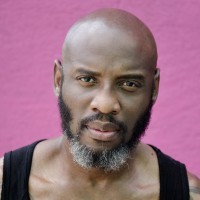
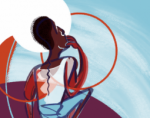
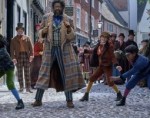
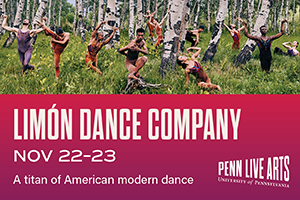
.png)


